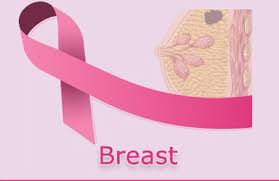
FIBROADENOMA OF BREAST
Fibroadenoma is a common benign (non-cancerous) breast tumor that often occurs in young women. It's made up of both glandular (breast tissue) and connective tissue. Here are some key points to be aware of:
Causes and Risk Factors:
- The exact cause is not fully understood, but hormonal changes, especially estrogen fluctuations, may play a role.
- It is most common in women of childbearing age.
Symptoms:
- Often, fibroadenomas are painless and are felt as a firm, smooth, and rubbery lump in the breast.
- The lump is usually movable and well-defined.
- It can vary in size from very small to several centimeters in diameter.
Diagnosis:
- Clinical breast examination by a healthcare provider.
- Imaging tests such as ultrasound or mammogram to confirm the presence of the lump and assess its characteristics.
- Sometimes a biopsy might be done to confirm that the lump is a fibroadenoma and not something more concerning.
Treatment:
- Small, asymptomatic fibroadenomas may not require treatment and can be monitored over time.
- If the fibroadenoma is causing discomfort, growing rapidly, or causing anxiety, it might be removed.
- Removal can be done through a surgical procedure called a lumpectomy, where the lump is removed while preserving the surrounding breast tissue.
Prognosis:
- Fibroadenomas are benign and not associated with an increased risk of breast cancer.
- After removal, recurrence is rare, but it's still important to continue regular breast self-exams and follow-up appointments.
- 2023-08-18T14:31:23








